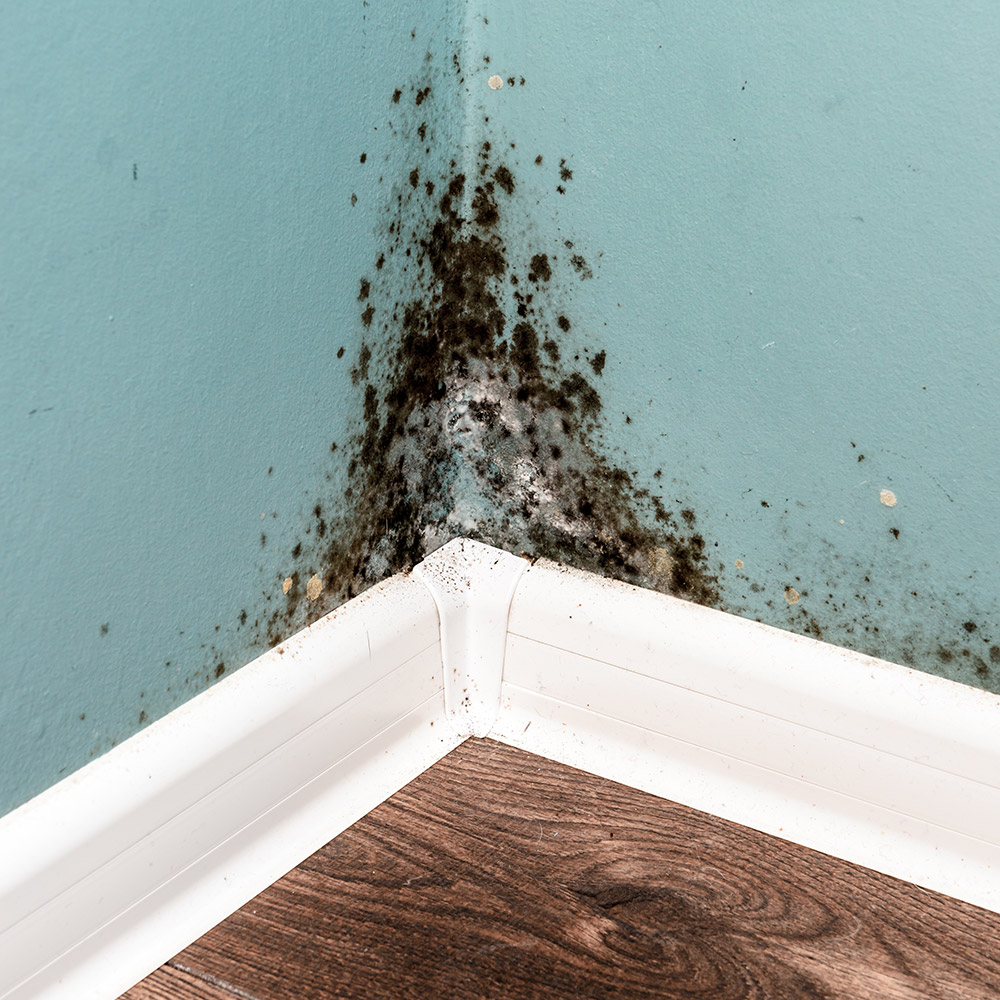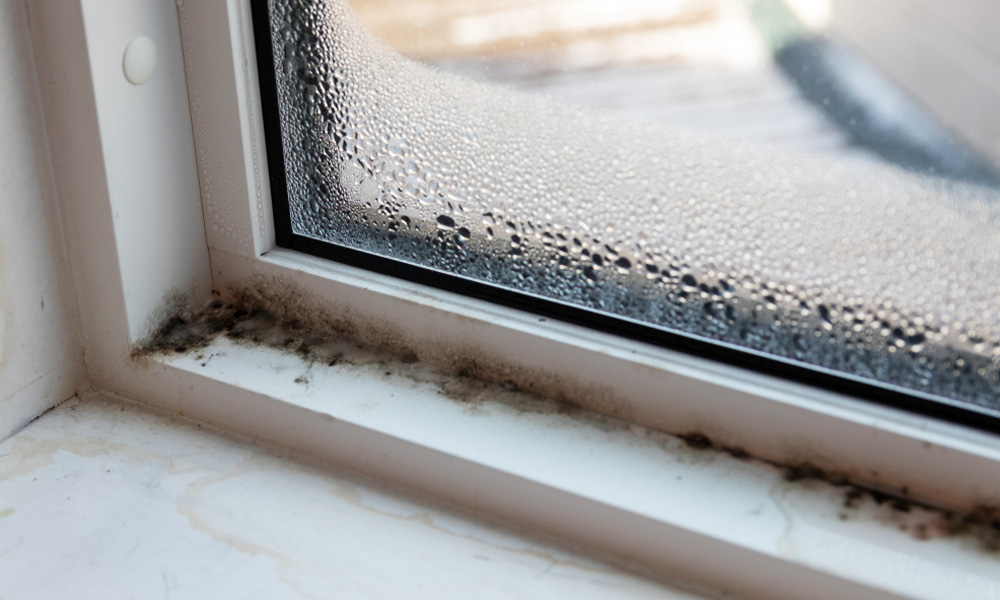Black mold, a type of fungus known for its dark appearance and potential health risks, has been a cause of concern for many homeowners. The question that arises is: can black mold be fully removed? This article takes a closer look at this topic, exploring the effectiveness of various mold removal methods and providing valuable insights for those dealing with this persistent problem. Whether you’re facing black mold in your home or simply curious about the possibilities of eradication, read on to discover the answers you’ve been searching for.

The Dangers of Black Mold
Black mold, also known as Stachybotrys chartarum, is a type of mold that can pose significant health risks to you and your loved ones. While all molds have the potential to cause adverse health effects, black mold is particularly concerning due to its ability to produce mycotoxins. These mycotoxins, when inhaled or ingested, can lead to a range of health problems, especially for individuals with compromised immune systems or pre-existing respiratory conditions.
Health Risks Associated with Black Mold
Exposure to black mold can result in various health issues, varying in severity depending on the individual’s sensitivity and duration of exposure. Common symptoms include respiratory problems such as coughing, wheezing, and shortness of breath. Additionally, individuals may experience nasal congestion, irritation of the eyes, throat irritation, and skin rashes.
Prolonged exposure to black mold can lead to more severe health conditions, including allergic reactions, chronic sinusitis, bronchitis, and even asthma attacks. Some studies have also suggested a potential link between black mold exposure and neurological symptoms, such as headaches, memory loss, and difficulty concentrating.
The Importance of Removing Black Mold
Given the potential health risks associated with black mold, it is crucial to prioritize its removal from your home or workplace. Ignoring the presence of black mold can lead to further mold growth, exacerbating the health risks and potential damage to your property.
How Black Mold Spreads
Black mold spores are constantly present in the environment, both indoors and outdoors. However, they require specific conditions to thrive and proliferate. These conditions typically involve moisture, organic materials for nourishment, and a suitable temperature range.
When these conditions are met, black mold can rapidly reproduce and release spores into the air. These spores can be easily transported to other areas of your property, leading to the spread of mold infestations. It is important to address the source of moisture that is promoting mold growth in order to prevent further spread and recurrence.

Identifying Black Mold
Knowing how to identify black mold is essential in determining whether your property has been affected. Black mold often appears as large, black patches that have a slimy or fuzzy texture. However, it is important to note that not all molds that appear black are necessarily black mold. To confirm the presence of black mold, it is recommended to have a professional mold assessment performed.
What Does Black Mold Look Like?
Black mold typically has a dark greenish-black color, sometimes exhibiting shades of gray or brown. It often appears as spots or clusters, spreading from a centralized source. The texture can vary, ranging from slimy and wet to powdery and dry. If you notice these visual characteristics in your home or workplace, it is essential to take prompt action.
Common Places to Find Black Mold
Black mold can thrive in areas that provide suitable conditions for its growth. Common places to find black mold include damp basements, bathrooms with poor ventilation, leaking pipes, areas affected by flooding or water damage, and poorly sealed windows or doors. It is important to regularly check these areas for signs of mold growth, especially in buildings with a history of moisture issues.
Signs of Black Mold Infestation
Aside from visual indications, certain signs can indicate a black mold infestation. A musty odor is often associated with mold growth, and its presence could suggest the existence of hidden mold. Additionally, if you or other occupants experience persistent symptoms of respiratory irritation or allergic reactions when in a specific area, it may be a sign of an underlying mold problem.

Methods of Black Mold Removal
When faced with a black mold infestation, it is essential to explore the various methods available for its safe and effective removal. Depending on the extent of the mold growth and the severity of the damage, different approaches may be necessary. It is important to assess the situation and consider the most appropriate method for your specific circumstances.
DIY Black Mold Removal
If the mold growth is minimal and confined to a small area, do-it-yourself (DIY) mold removal techniques may be appropriate. Before attempting DIY removal, ensure you take necessary precautions, such as wearing protective clothing, gloves, and a mask to avoid inhaling mold spores. Common DIY methods include using bleach, vinegar, or a baking soda and hydrogen peroxide solution to eliminate the mold.
Hiring Professional Mold Removal Services
For extensive mold infestations or situations where the mold has affected structural components of your property, it is advisable to seek the expertise of professional mold removal services. Mold remediation professionals have the knowledge, experience, and specialized equipment to safely and thoroughly remove black mold. They can also identify and address the underlying causes of mold growth to prevent future occurrences.
Removal of Moisture Sources
Regardless of the method employed for mold removal, it is crucial to address the underlying moisture sources that initially promoted mold growth. Removing the source of moisture is key to preventing the recurrence of black mold. By fixing leaks, improving air circulation and ventilation, and controlling indoor humidity, you can create an environment less conducive to mold growth.

When to Call a Professional
While DIY methods can be effective in certain scenarios, there are instances where it is best to call in professional help. These situations include extensive black mold growth, where the affected area exceeds 10 square feet, or if you lack the necessary knowledge, equipment, or experience to safely remove the mold. Additionally, if you or other occupants experience severe allergic reactions or if the mold growth is hidden, professional assistance is crucial.
Extensive Black Mold Growth
If the black mold infestation has spread extensively and covers a large area, it is advisable to seek professional mold remediation services. The professionals have the expertise to handle large-scale mold removal and ensure that all affected areas are properly treated.
If You Have Allergic Reactions
If you or any occupants experience severe allergic reactions, such as persistent coughing, sneezing, or worsening asthma symptoms upon exposure to mold, it is important to call a professional. Allergic reactions can be a sign of heightened sensitivity to mold spores and require immediate attention.
Hidden Mold Infestations
Sometimes, black mold can grow in hidden areas, such as behind walls or under floors. These concealed mold infestations can be particularly difficult to detect and address without professional assistance. Mold remediation professionals can conduct thorough inspections, utilizing specialized tools to identify hidden mold growth and implement appropriate removal strategies.

The Importance of Removing Moisture Sources
To effectively prevent black mold regrowth, it is essential to remove or mitigate the sources of moisture that initially facilitated its growth. By addressing the underlying moisture issues, you can create an environment that is less favorable for mold colonization.
Fixing Leaks and Water Intrusions
Leaking pipes, roof leaks, and water intrusions through windows or doors can introduce excess moisture into your property. By promptly addressing these issues and repairing any leaks, you can eliminate a crucial component for mold growth.
Improving Air Circulation and Ventilation
Proper air circulation and ventilation play a vital role in preventing mold growth. Ensure that your property has adequate ventilation systems, especially in areas prone to excess moisture, such as bathrooms and kitchens. Consider using exhaust fans to improve air exchange and reduce humidity levels.
Controlling Indoor Humidity
High indoor humidity provides the ideal conditions for mold to thrive. Utilize dehumidifiers in areas with elevated humidity levels and monitor and maintain indoor humidity levels below 50%. An indoor humidity monitor can be a useful tool for assessing and controlling moisture levels.
Preventing Black Mold Regrowth
After successfully removing black mold, it is important to implement preventive measures to minimize the risk of future infestations. By incorporating these practices into your routine, you can create a healthier and mold-resistant environment.
Regular Cleaning and Maintenance
Regularly clean areas prone to moisture, such as bathrooms and kitchens, using mold-inhibiting products. Remove any visible mold promptly and ensure that surfaces are kept dry to inhibit mold growth.
Using Mold-Resistant Products
In areas prone to moisture, such as bathrooms or basements, consider using mold-resistant materials, such as mold-resistant drywall or paints. These products are specially formulated to inhibit mold growth, reducing the chances of black mold infestations.
Properly Drying Wet Materials
In the event of a water leak or flooding, it is essential to promptly dry any affected materials or areas. Moisture-laden materials can provide a fertile breeding ground for mold, so it is crucial to thoroughly dry them to prevent mold growth.
The Limitations of Black Mold Removal
While thorough mold removal is crucial, it is important to understand the limitations of the process. Certain factors can complicate the removal process and pose challenges.
Inability to Remove Mold from Porous Materials
Mold can penetrate deeply into porous materials, making complete removal challenging. Materials such as carpets, upholstery, and drywall may require professional assessment to determine whether they can be salvaged or need to be replaced.
Hidden Mold Infestations
As mentioned earlier, hidden mold growth can be difficult to detect and remove on your own. Professional mold remediation services have the expertise and specialized equipment necessary to identify and address hidden mold infestations effectively.
Undetected Mold Spores
Even after thorough removal of visible mold, some mold spores may remain undetected. These spores can cause reinfestation if conditions become favorable for their growth. Regular monitoring and maintenance, along with preventive measures, are necessary to minimize the risk of regrowth.
Conclusion
Black mold poses significant health risks, and its prompt and proper removal is crucial for maintaining a safe and healthy living environment. Whether through DIY methods or professional services, addressing black mold infestations and the underlying moisture sources is essential. By identifying, removing, and preventing black mold, you can safeguard the well-being of yourself and your loved ones, ensuring a mold-free home or workplace.